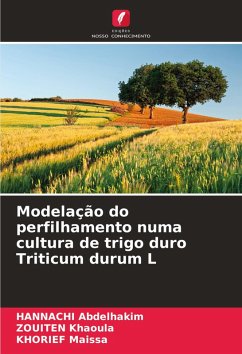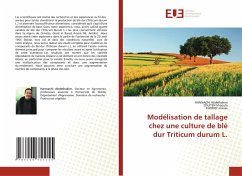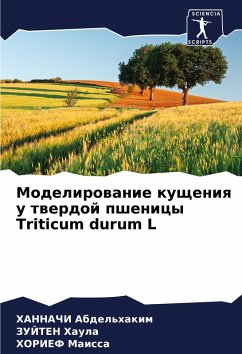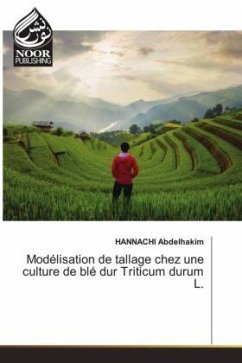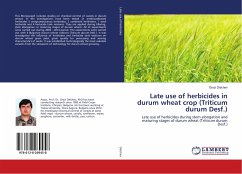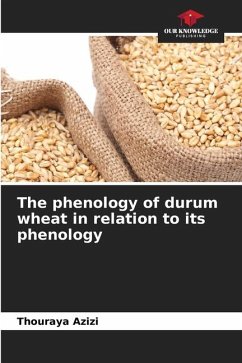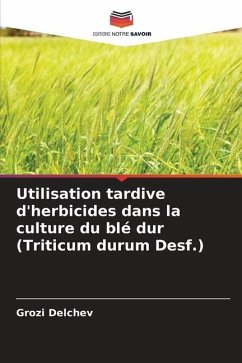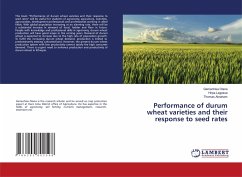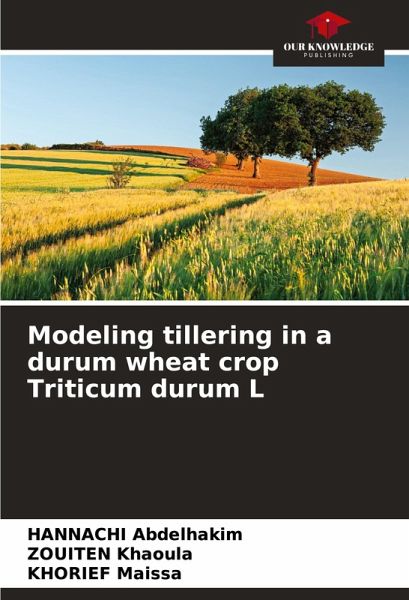
Modeling tillering in a durum wheat crop Triticum durum L
Versandkostenfrei!
Versandfertig in 6-10 Tagen
40,99 €
inkl. MwSt.

PAYBACK Punkte
20 °P sammeln!
Scientists have carried out research and experiments over the years in an attempt to improve durum wheat (Triticumdurum) production and achieve food self-sufficiency, considering it to be a staple food.In our experiment, we used four durum wheat (Triticumdurum) varieties most commonly used in the region of (siméto, oued el bared, amare 06, antalis). We carried out this experiment in the garden of the University of Skikda on August 20 1955, out of soil and under natural conditions. In our analysis, we carried out a comprehensive study to model the components of durum wheat (Triticumdurum), usi...
Scientists have carried out research and experiments over the years in an attempt to improve durum wheat (Triticumdurum) production and achieve food self-sufficiency, considering it to be a staple food.In our experiment, we used four durum wheat (Triticumdurum) varieties most commonly used in the region of (siméto, oued el bared, amare 06, antalis). We carried out this experiment in the garden of the University of Skikda on August 20 1955, out of soil and under natural conditions. In our analysis, we carried out a comprehensive study to model the components of durum wheat (Triticumdurum), using nitrogen as the main element to compare results before and after the use of this substance.the results showed that the varieties responded linearly to this element and gave high results, particularly for the variety siméto, where we recorded a multiplication of components and therefore an increase in yield. We can therefore conclude that there is an increase in the number of components in the ear phase.





